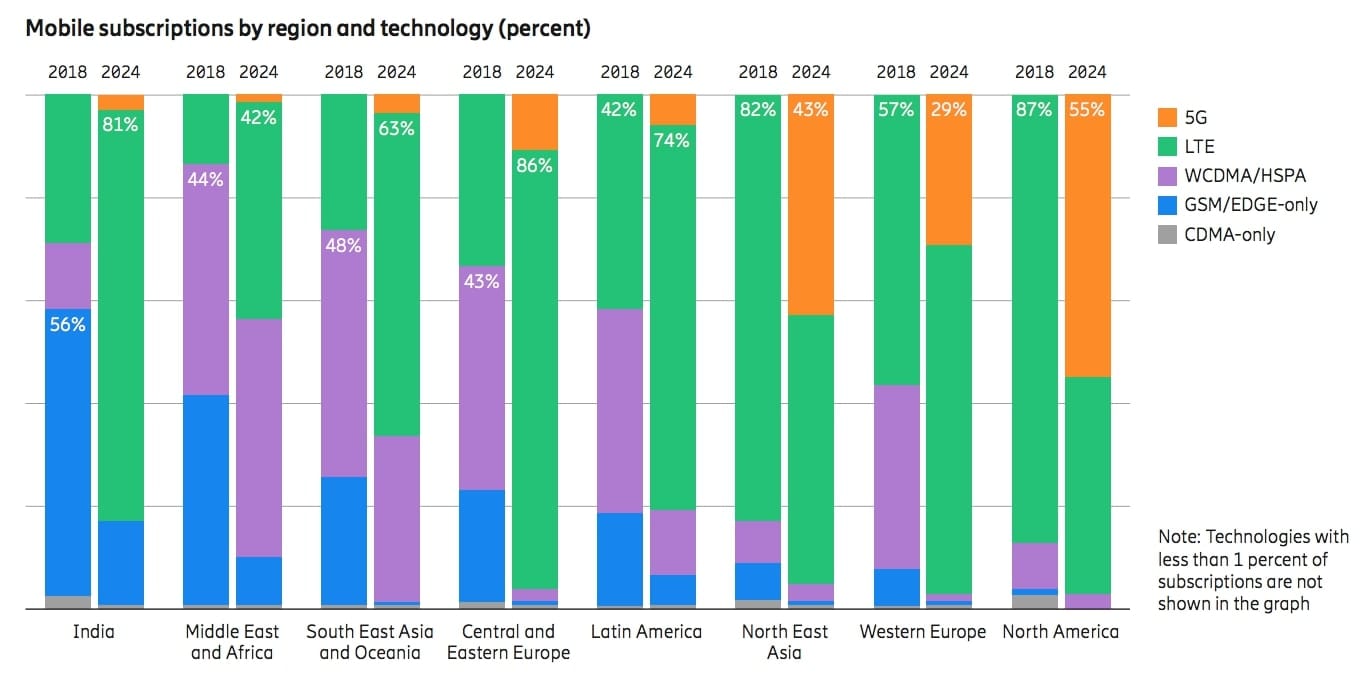5G will cover 40% of the population in six years
The latest Ericsson Mobility Report projects 5G will achieve global scale more quickly than previous generations of cellular, reaching 1.5 billion subscribers by 2024 and covering 40% of the world’s population in the same timeframe.
All told, there are currently 7.9 billion cellular subscriptions, according to the report authors, with China and India leading the growth, adding 37 million and 31 million lines respectively in the third quarter. Further breaking that down, 3.3 billion of those subscriptions are for LTE networks.
Specific to 5G, subscription growth will be lead by the customers in the U.S., South Korea, Japan, China and some parts of Europe. Relative to the 2024 timeframe, at that point Ericsson sees the 1.5 billion 5G subscriptions accounting for 17% of total mobile subscriptions.
Report Publisher Frederik Jejdling, an Ericsson EVP and head of business area networks, wrote that 5G is a “key component” of a “successful mobile broadband business. As new spectrum and the promise of lower cost per gigabyte delivered will be key drivers of 5G deployment. As 5G hits the market, the mobile ecosystem is larger and more widespread and extensive than ever.”
In the U.S., Verizon is in-market with its fixed wireless 5G Home broadband service supported by a in-home CPE, and AT&T is plans to launch by year-end with its a mobile hot spot as the initial device. Both carriers are tapping millimeter wave frequencies for their commercial deployments. As 5G matures, Ericsson researchers point out the complexities of delivering device-side support given the complexity of 5G.
In the report, the authors call out “three non-standalone 5G variants” that require device support: “TDD for [millimeter wave], TDD for mid-band and FDD for low-band…Compared to the introduction of LTE, the scope of 5G technical variants is much wider.”
Qualcomm has a 5G compatible modem and chipset, as well as millimeter wave modules, that will support numerous 2019 handset launches from Android OEMs. Intel is looking to launch its 5G modem in the second half of 2019.
Ericsson sees 2020 as when “5G enters the mass market. At this point in time, third-generation chipsets will have introduced and a large number of devices will be available.”
Here’s a regional breakdown of mobile subscriptions by technology type:


